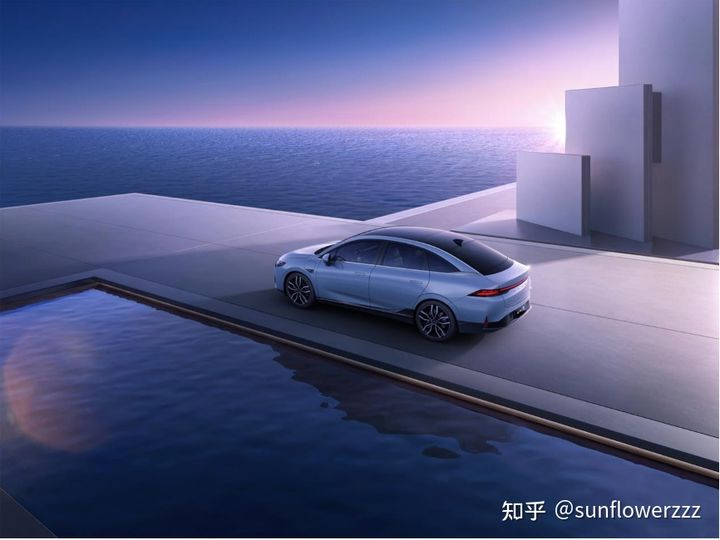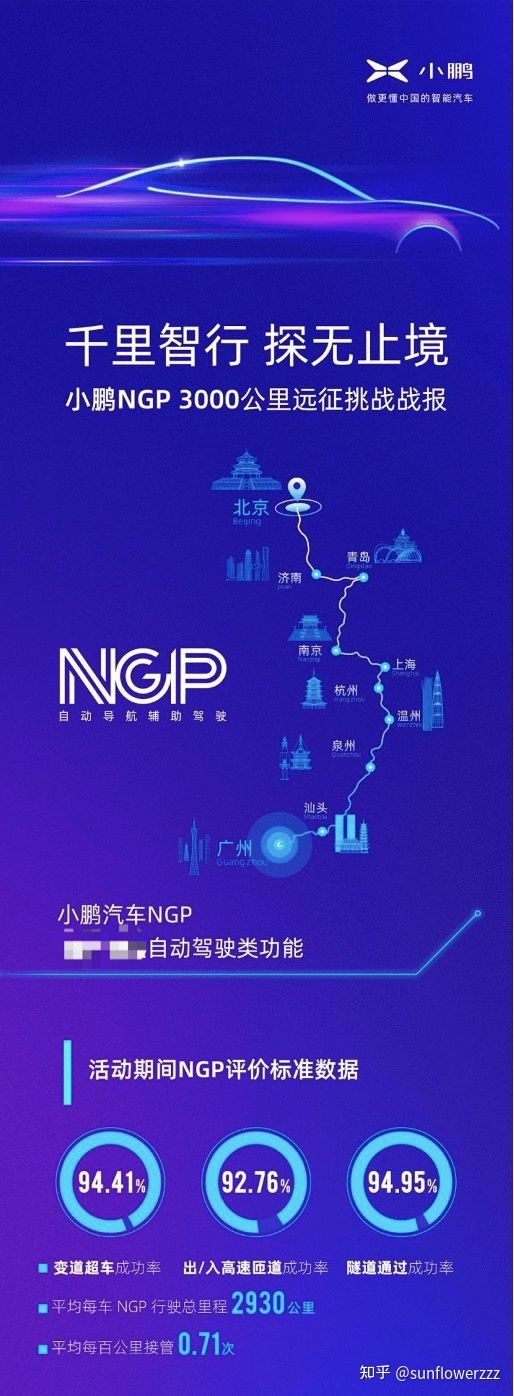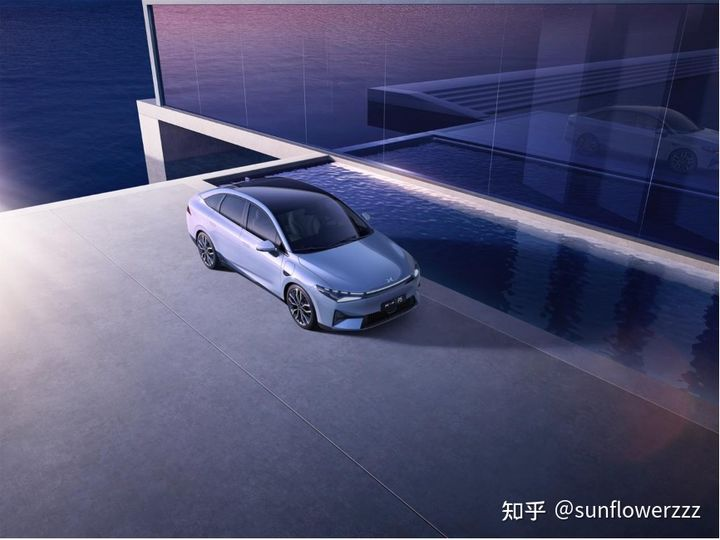Let me put it this way, the product of XPeng P5 has successfully continued the brand image that XPeng has established before – an intelligent electric car brand that understands Chinese people better. It has the best and most comprehensive intelligent driving assistance experience in China at this stage, and the intelligent software and hardware innovation further strengthen the user experience.
City NGP, which is necessary for a complete driving assistance experience, is the last piece of the puzzle. On XPeng P7, XPeng already has the high-speed NGP based on high-precision maps, which I think is in the first tier in China in terms of complete experience and high success rate. Now, with the addition of two Lidars on P5, intelligent driving assistance will be improved in a real sense. If XPeng can really implement City NGP and successfully launch it, then XPeng’s driving assistance experience will be further improved.

NGP, which was launched on January 26th this year, is the highest level automatic driving assistance function currently owned by XPeng’s products. The intelligent version and the luxury version P7 with the XPILOT 3.0 system can achieve high-speed NGP. Based on the user’s set navigation route, it can achieve automatic navigation assistance driving from point A to point B. The background conditions required are high-speed highways and some urban expressways covered by high-precision maps.
In March, XPeng held the NGP expedition event, inviting friends and media to drive P7 together from XPeng’s headquarters in Guangzhou, passing through Shantou, Quanzhou, Wenzhou, Hangzhou, Shanghai, Nanjing, Qingdao and Jinan, and finally arriving in Beijing, a total distance of 3675 kilometers. The high-speed mileage available for NGP functions exceeded 3000 kilometers, and the performance of NGP during the event was amazing, with an average success rate of 94.41% for lane change and overtaking, 92.76% for entering and exiting highways, and 94.95% for passing through tunnels. The average number of takeovers per 100 kilometers was only 0.71 times throughout the journey. (Source: XPeng NGP 3000 km Expedition Challenge Press Release)

In high-speed NGP, automatic speed limit adjustment, selection of the optimal lane, automatic overtaking and merging, and entering and exiting highways etc. can fully deal with common driving events in China’s current high-speed environment. The average number of takeovers per 100 kilometers achieved during the NGP expedition event shows the practical performance of NGP function under high-speed environment.小鹏 has already announced that its next model will be equipped with LiDAR. The main purpose of the LiDAR is to provide NGP solutions for more complex urban road conditions in China, which is more specific compared to other manufacturers who have recently announced LiDAR-equipped vehicles.
Based on the current information, the NGP function, which was previously only available on highways and urban expressways, will now be expanded to main and secondary urban roads. It will assist drivers in executing driving tasks according to navigation routes, and has the ability to pass through intersections (including recognition of traffic lights, right turns and unprotected left turns), ability to overtake in urban road conditions, customized following distance control, automatic speed limit adjustment based on road conditions, and the ability to pass through roundabouts, among others.
With the current level of NGP on highways, it is believed that XPeng Motors has sufficient experience in dealing with China’s complex road conditions. With the addition of two LiDARs, the NGP function of the P5, which is integrated with a total of 32 sensors, IMU, and GNSS high-precision positioning module, will work together with the existing NGP function on highways to create XPeng’s intelligent driving assistance experience.
New energy vehicle companies have not been particularly good at hardware innovation in the past, but this trend is changing with the P5. Unlike the G3 and P7, the hardware design of the car is no longer a minor part of the overall intelligent driving experience.
What impressed me the most was the solar panel on the roof of the car. Although solar panels on new energy vehicles for charging are not uncommon, this feature was highlighted as a major selling point for the Fisker Karma years ago. However, the energy conversion efficiency and charging power of solar panels are often limited, and it is more of a gimmick than a practical feature for the battery.
On the P5, the solar panel on the roof has been given a more practical function. It can charge the battery in both parking and driving modes, or directly drive the panoramic sunroof for intelligent ventilation. The former avoids the embarrassment of a dead battery in pure electric cars, while the latter ensures a comfortable passenger environment before driving in hot summer weather, which is a feature that only “subtropical new car companies” can think of.
The P5 offers a spacious interior with versatile seating, storage, and cargo capabilities. With 991 mm of second-row legroom and fold-down rear seatbacks, the P5 can form a nearly flat cargo space, maximizing interior space utilization. Additionally, the door panel storage compartments include built-in vacuum cleaners, a thoughtful and practical feature commonly found only in American minivans until now.
In terms of human-machine interaction, the P5 also offers an impressive level of vehicle-wide voice control like on the P7. The language interaction activation button in the rear door panel control area can directly activate the front microphone to recognize the language spoken in the rear seats, replacing more expensive rear microphones. The P5 also features Xmart OS 3.0 with advanced hardware, including the Qualcomm 8155 chipset, 12 GB of car memory, and 128 GB of built-in storage space. Xmart OS 3.0 offers numerous child-friendly apps such as companion fish picture books, KaDa stories, pocket stories, and homework assistance.
The P5’s versatile seating provides even more intelligent interaction possibilities such as expanding the interior space horizontally by folding down the front seatbacks to level with the rears. Additionally, the P5 explores the “People-Car-Environment AIOT Interaction Ecology,” offering factory-customized 47-inch exclusive screens, projectors (directly connected to high-fidelity audio systems), sleep kits, onboard refrigerators, multifunctional table tops, intelligent fragrance systems, and onboard drones. These accessories offer a range of amusement possibilities, such as a mobile theater, a second living room, and a moving lounge. In short, the P5 offers an all-encompassing intelligent experience for drivers and passengers alike.The XPeng P5 has integrated third-party car-home connectivity features, which allows users to control their homes remotely for the remaining hour while staying in the car for up to 23 hours. With full-scenario interaction and usage, a more comprehensive intelligent experience across multiple scenarios is available on the XPeng P5, which also supports smart home applications while driving.
This article is a translation by ChatGPT of a Chinese report from 42HOW. If you have any questions about it, please email bd@42how.com.
